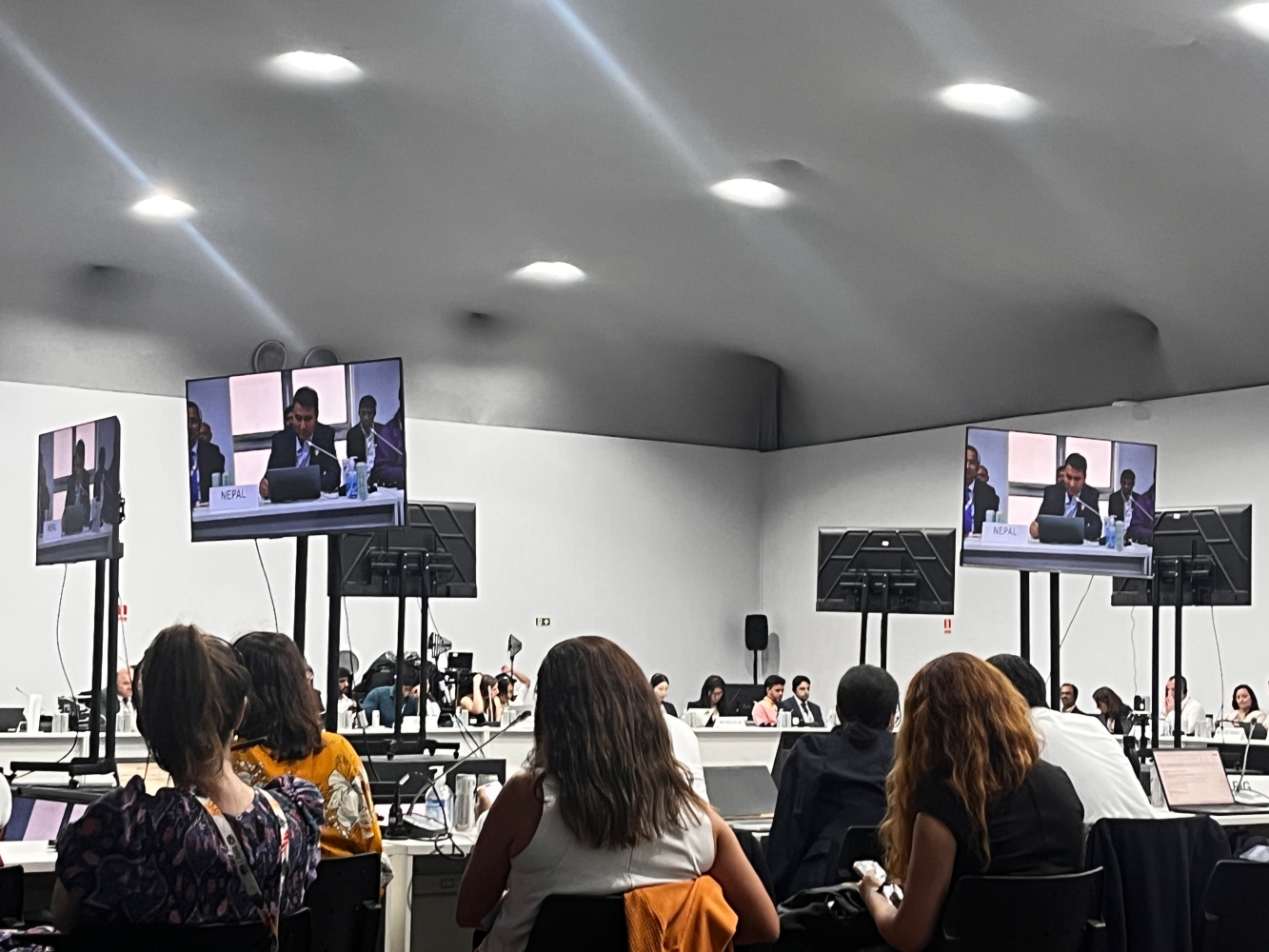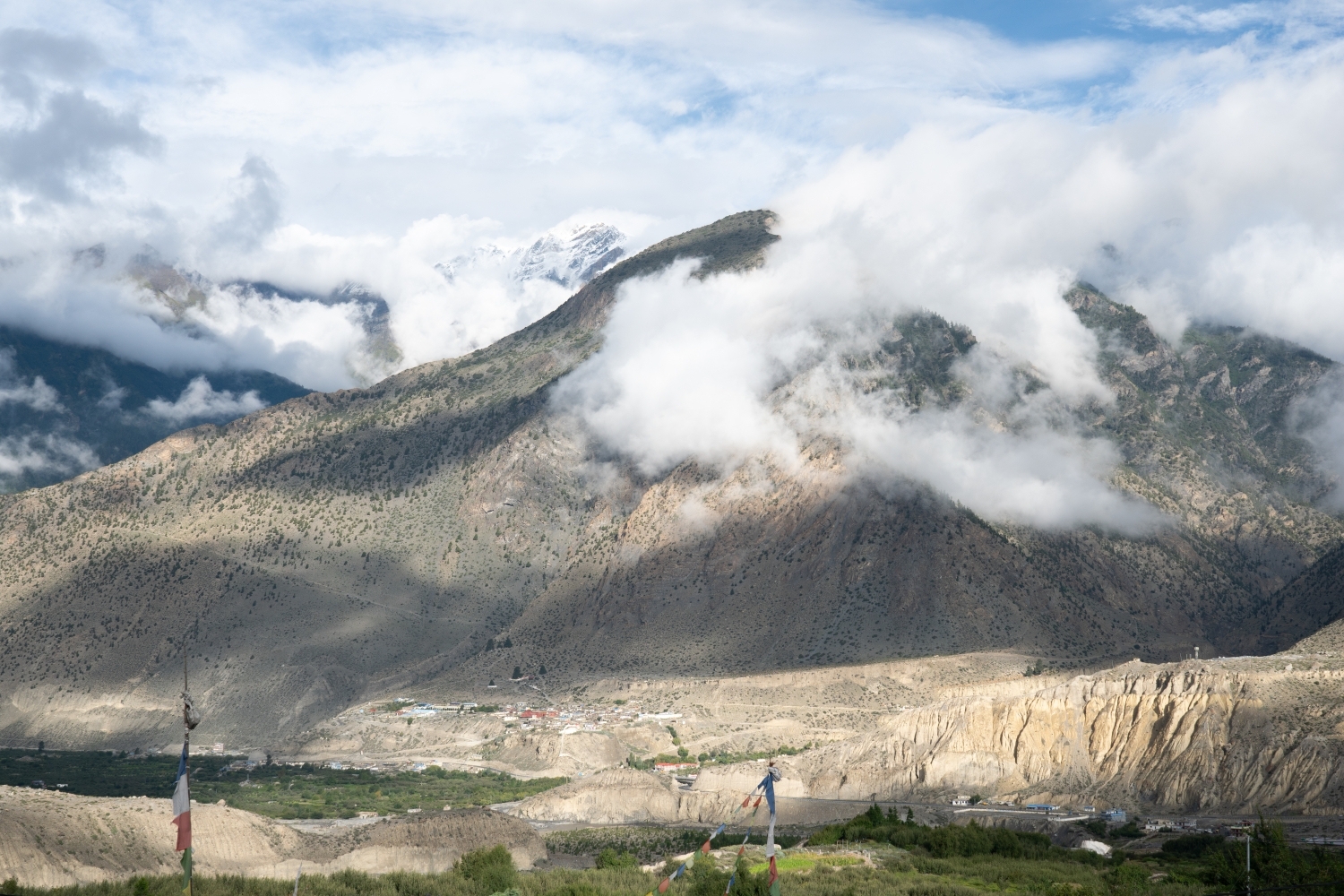Making molehills out of mountains at COP30
The Himalaya and other mountains once more overshadowed at Brazil climate summitIt should not be surprising that negotiations here at the COP30 climate summit is stuck over a clause calling for phasing out fossil fuel in order to save the biosphere from climate breakdown. After all, the past two summits have been hosted by petro-states, and Brazil itself is now the largest producer of oil in Latin America.
Talks on final resolution were also delayed by a fire that broke out on Wednesday in one of the tent venues. The climate conference has now been extended by a day.
But the disagreements go much deeper. On the one hand, the main petroleum exporters don’t want any reduction in fossil fuel use, while developing countries do not want to phase out unless compensated for switching to renewables.
In all this, the impact of climate breakdown on the Himalaya, the Alps and other mountain ranges has again fallen by the wayside. Mountains are accurate barometers of climate change, and the High Asia is the largest repository of fresh water stored as ice after the polar regions.
“Mountains and mountain communities are the most impacted in terms of climate justice. Mountain communities have contributed to nature and water resources, yet they face the greatest hardships,” said Nepal’s delegate Maheshwar Dhakal.

At COP28 in the UAE two years ago, Andorra and Kyrgyzstan pushed for mountain regions of the world to be high on the agenda. Nepal could have led this agenda, but it lacked diplomatic strategy and leadership. By COP29 in Baku last year, Nepal, Andorra, Bhutan and Kyrgyzstan raised the mountain agenda. But action on this is moving at a glacial pace.
In Baku, President Ram Chandra Paudel called for international unity to tackle climate change and stressed the urgency of supporting mountain nations, which are bearing the brunt of the climate crisis despite historically contributing the least to global emissions.
Now at COP30, mountain nations have collaborated to lobby for support and highlight the vulnerabilities of mountain regions. Nepal initiated the Sagarmatha Sambad, a call for action that emphasised the need for a dedicated fund to safeguard mountain ecosystems-though its launch in May, but foreign participation was low-level.

Nepal has been branding Sagarmatha Sambad across negotiation rooms, meetings, and side events in Belém, but it does not look like it is getting much traction even though the Nepal delegation has been leading mountain countries.
Nepal’s negotiator Manjeet Dhakal says that after many rounds of interventions and support from other highland nations, the term ‘mountains’ has been included in the new Global Stocktake text.
Himalaya, Andes and other mountain countries participated in the Presidency’s consultations on mountains and climate change which will pave the way for a special dialogue at the June 2026 session in Bonn.
The COP Presidency has also requested the subsidiary bodies-SBSTA (science/technical advice) and SBI (implementation) to hold a formal dialogue on mountains and climate impact in Bonn. The dialogue may then decide whether to establish an annual dialogue within the COP process. SBSTA and SBI chairs must appoint two co-facilitators-one from a developing country and one from a developed country.

This is a first step toward potentially creating an annual mountain dialogue within the climate process — an important move for regions like the Himalayas. Kyrgyzstan has been particularly clear and vocal about its mountain priorities.
Dinara Kemelova, Special Envoy of the President of Kyrgyzstan on the Mountain Agenda, said: “We have been promoting the creation of a Global Mountain Resilience Center in Kyrgyzstan — an international platform for science, early warning, data sharing, adaptation technologies, and training for mountain countries.” Kyrgyzstan has also demanded better access to climate finance, saying mountain countries remain severely under-funded.
David Forné Massoni, Secretary of State for Energy Transition, Transport and Mobility of Andorra, said there was now “one mountain voice” sharing experiences and collaborating on policies that support mountain livelihoods and ecosystems.
Nepal has been vocal on the mountain agenda, but it continues to lack clear priorities and strong action on the global platform. Still, through the representation of mountain communities, Nepal is gaining visibility, which is positive step forward.

1.5°C OR 2.9°C?
Mountain regions of the world are warming faster than the global average. The Himalaya, for example, is heating up 0.7°C more rapidly than elsewhere due to what is called ‘altitude effect’.
Warming threatens mountain ecosystems, accelerates glacier melt that feed rivers, and increases catastrophic risks downstream. The UNEP Emissions Gap Report 2025 states that even if all countires meet their voluntary commitments, global temperatures are still projected to rise 2.3–2.5°C by 2050.
The report concludes countries are dangerously overshooting the limit warming to 1.5°C. UNEP Executive Director Inger Andersen said: “We are already off the target, but not out of time.”
To limit overshoot to about 0.3°C with a 66% chance and return to 1.5°C by 2100, emissions must fall 26% by 2030 and 46% by 2035. For mountain nations like Nepal this means rising temperatures in high altitudes, increasing GLOF (glacial lake outburst flood) risks.
Nepal has experienced more frequent and destructive GLOF events in recent years. Changing rainfall patterns have heavily impacted mountain communities. Water scarcity in some regions and unusually heavy rainfall in Manang and Mustang are signals of climate stress accelerating in mountain environments.

Nepal on a list of the 10 most at-risk countries to climate impact in 2024. Bill Hare, Director of Climate Analytics, says keeping global temperature rise to 1.5°C, as promised in the Paris Agreement, is “almost certainly impossible.”
This is due to the failure to cut emissions between 2020 and 2025 and because the climate system appears to be running hotter than expected. He notes that if emissions are cut by 50% by 2030, the climate response could still keep warming to around 1.5-1.6°C.
If emissions are not halved by 2030 but strong action is still taken, peak warming could be limited to 1.6–1.7°C — an achievable ambition. Hare suggests deep methane reductions could significantly limit peak temperatures. He argues that 1.5°C must remain the benchmark because current warming is already causing devastating impacts globally.
Keeping 1.5°C within reach minimises risks, losses and damage. The Climate Action Tracker suggests three near-term actions to bend the warming curve below 2°C: Reducing methane, Tripling renewable energy, Doubling energy efficiency.
The steps taken at COP30 will remain small and insufficient to meet these targets. This year, progress came mainly through interventions from Kyrgyzstan, Andorra, Nepal and Chile. The mountains are in crisis, and meaningful action to address their vulnerabilities is still far behind what is urgently needed.
This story was produced as part of an Internews Earth Journalism Network and the Stanley Center for Peace and Security fellowship.




